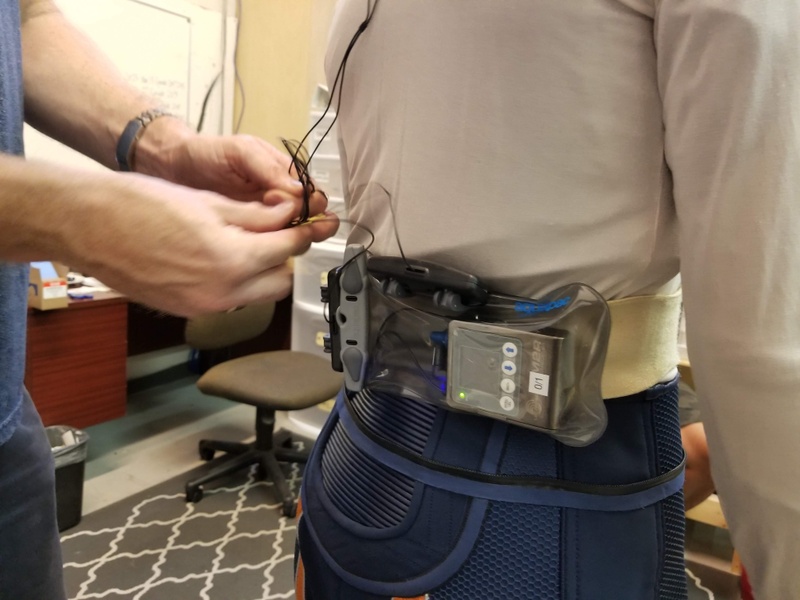The Netflix series Lost in Space was recently re-upped for a second season, scheduled to premiere this Christmas. The reimagining of the iconic 1960s sci-fi series earned an Emmy nomination, and for season 2, NY-based Gotham Sound faced a challenge equal to the Robinson family surviving on a strange planet: design a communications and IFB system on which actors clad in space suits could hear everything—and integrate the whole think into Production Sound Mixer Graham Timmer's rig in time for the start of season 2 while adding minimal gear to the already elaborate costumes.
Gotham’s Peter Schneider chose the Duet system from Lectrosonics, comprised of two M2T transmitters and eight M2R receivers.
“The need was to have a system where all the actors could hear each other as well as direction,” explained Schneider. “They really needed each actor to have their own mix, minus their own voice when they spoke. Number one, it would bleed into the microphone mounted inside their space suit, and it’s distracting. Number two; there was the possibility of feedback because the acoustics inside the space helmet were very lively. It was designed to be visually appealing. It was mostly glass, which made it a very small echo chamber. If there were only one IFB mix for all the actors, any one suit having feedback issues would be heard by all.
“Here’s why I immediately spec’d out the Duet in-ear system,” Schneider added. “First of all, dialogue on season 1 was recorded via Lectrosonics SMQV transmitters mounted inside the suits, and the team was very impressed with their reliability and sound, so we were going to continue using those and needed something that would dovetail with them in terms of frequencies. As for the M2Ts, I chose them because of the quality of the audio and also the spectrum efficiency. Each unit is only a half-rack in size, and has two channels but because of the digital transmission, I can get two talk paths from one carrier signal. So that’s four talk paths per unit. With two M2Ts side by side, that’s eight audio paths in a single rack space, which was important because the rig had to be very portable.”
Given the nature of the costumes, Lectrosonics’ reliability, agile frequency pairing, and set-it-and-forge-it operation proved to be of very practical value on the Lost in Space set. “As I learned when I got on set for some preliminary testing, the space suit is time-consuming to put on and take off, requiring the help of two other people. So, once the M2R was in place, having to get in there to tweak something would be a huge interruption to the production. We went with a combination headset from DPA, inherited from and established on Season 1, which included both mic and earpiece, and had two connectors. The mic was routed to the SMQV via a TA5F connector, and the earpiece portion took the actor’s IFB mix from the M2R via a 1/8-inch mini plug. This was hidden inside the space helmet,” said Schneider.
How did these setups perform in the hostile environment of an alien world? “It definitely lived up to the challenges,” reflected Schneider. “Lectrosonics support was there hand-in-hand for us the whole time. They went above and beyond and I’m really grateful, but the bottom line is, the system worked. The reliability of the reception from the actors’ SMQV packs to the mixer, then the reliability of the IFB transmission back to the actors’ M2Rs, were both unmatched.”
Season 2 of Lost in Space will begin on Netflix on December 24, 2019.
